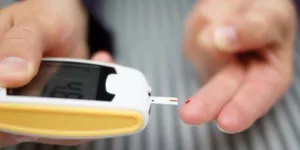As a diabetic, you need to go above and beyond to keep a close eye on your blood sugar levels. If you’re not careful, you’re going to run into significant problems at some point in the future. You may very well experience severe repercussions by neglecting your blood sugar. This is why it is absolutely pertinent to go above and beyond to ensure that you have access to the right diabetic supplies. Within this in-depth guide, you will learn about the most essential diabetic supplies and their importance.
Type 2 Diabetes
What exactly is type 2 diabetes? It is almost certain that you’ve heard of type 2 diabetes at some point or another. This is a health problem that causes your sugar levels to climb to abnormal thresholds. Type 2 diabetes is very common. In fact, it just happens to be the most common type of diabetes in the world. When suffering from diabetes, your body will not be able to use the insulin that it produces properly. This is often referred to as having an insulin resistance.
Type 2 diabetes is usually caused by incorrect lifestyle choices.
Type 1 Diabetes
Type 1 diabetes is far less common than type 2. Nevertheless, it can have a major impact on patients. On average, it is believed that only five percent of people with diabetes actually suffer from type 1 diabetes. It should also be known that type 1 diabetes is not caused by lifestyle choices. Patients suffering from type 1 diabetes have a problem in which their body is unable to produce insulin. While type 1 diabetes can be very problematic, patients can still learn to control and manage the condition.
By learning to keep your type 1 diabetes in check, you will be able to live a very long and healthy life. And, you’ll be able to keep your quality of life at the maximum.
Diabetic Supplies
When it comes down to it, there are tons of essential diabetic supplies. Whether you have type 1 or 2, it is absolutely pertinent to better familiarize yourself with these supplies. At the same time, you should have them on hand at all times. You truly never know when your blood sugar is going to drop too high or climb too low. Therefore, you should be prepared to take action right away. You should always be ready to take steps to rectify the problem to avoid more serious repercussions.
Below, you will learn a great deal more about the most common diabetic supplies, their purpose and tips for use.
Blood Glucose Meters
If you suffer from diabetes, you’re going to become very familiar with the blood glucose meter. In fact, you’ll probably find yourself utilizing your meter on a daily basis, if not more frequently. So, what is it? Well this is a small machine that is totally portable. The machine is utilized to test your blood sugar levels at any point in time. In order to use a blood glucose meter, you’ll also need a lancet and a test strip. Place the test strip in the meter and poke one of your fingers. Hold the strip to the blood droplet, until it absorbs enough. Then, you should receive a reading on the meter’s screen.
Canadian Insulin sells all of the diabetic supplies that you could ever need! Be sure to get your hands on these necessary supplies, so you can always keep your blood sugar levels in check.
Diabetes Testing Strips
Each glucose monitor comes with unique testing strips. While some brands will design their monitors to accept the same testing strips, other brands will not. It is important to note the type of strip the glucose monitor accepts, before making a purchase. Some people will even base their decision on the cost of the strips, so they can afford to pay for them. However, people who are covered under a quality health care plan will not need to worry about the price so much, because glucose monitors and testing strips are approved for reimbursement.
Testing strips are designed to fit directly into the glucose monitor. The appropriate time to put the strip into the monitor will vary, but the monitor will guide you through the process. Once the monitor accepts the strip, you will need to add a drop of blood to the tip. Within seconds you will receive the results of your blood glucose test, which will appear on the LCD display.
Your physician or endocrinologist will provide you with an educational course on how to perform the proper glucose testing. Each monitor works in a unique manner, so pay close attention to the instructions. If you fail to follow each step of the process correctly, you will receive an error on the display.
Understanding Diabetic Lancing Devices
As a diabetic there are a variety of different devices and tools that you are going to need for the rest of your life to ensure that you are living a healthy and safe lifestyle. That is why it is imperative that you understand everything you possibly can about these devices and how to properly use them. Two devices that you are going to be relying on everyday are lancets and lancing devices. Lancets are small needles that you will be using to prick the skin to get a blood sample. With that being said, you should know that many lancets could be used in conjunction with lancing devices to make the process less painful for individuals that have sensitivity to needles.
Once you have your blood sample it will then be inserted into a machine, where the blood will be tested. The main goal of the test is to test your blood sugar levels and make sure that they are within appropriate ranges. While the lancet can be used alone to acquire the sample many individuals prefer to use a lancing device as well, because it is more effective. All you have to do is make a quick punch of the skin and the sample will be procured.
How To Use Lancet And Lancing Devices
With all that being said, using a lancet and lancing device is not just as simple as procuring a blood sample. Anytime you are checking your blood sugar you need to ensure that your hands are clean and free of bacterium, otherwise you could end up with a major infection. Once your hands are clean simply insert a new lancet into your test device, while making sure that the cap is still on the needle, otherwise you might poke yourself. Once the lancet is in the test device, you can remove the cap, expose the needle, and prick your skin.
Keep in mind that there are a variety of different lancets available and some will even require different depths for pricking. Some have 9 or more different depth settings, while others only have one or two. This shorter the depth the less painful the prick is going to be. The depth is usually adjusted by simply just twisting the cap of the lancet. After you have procured your sample be sure to place the cap back on the needle to prevent poking yourself.








